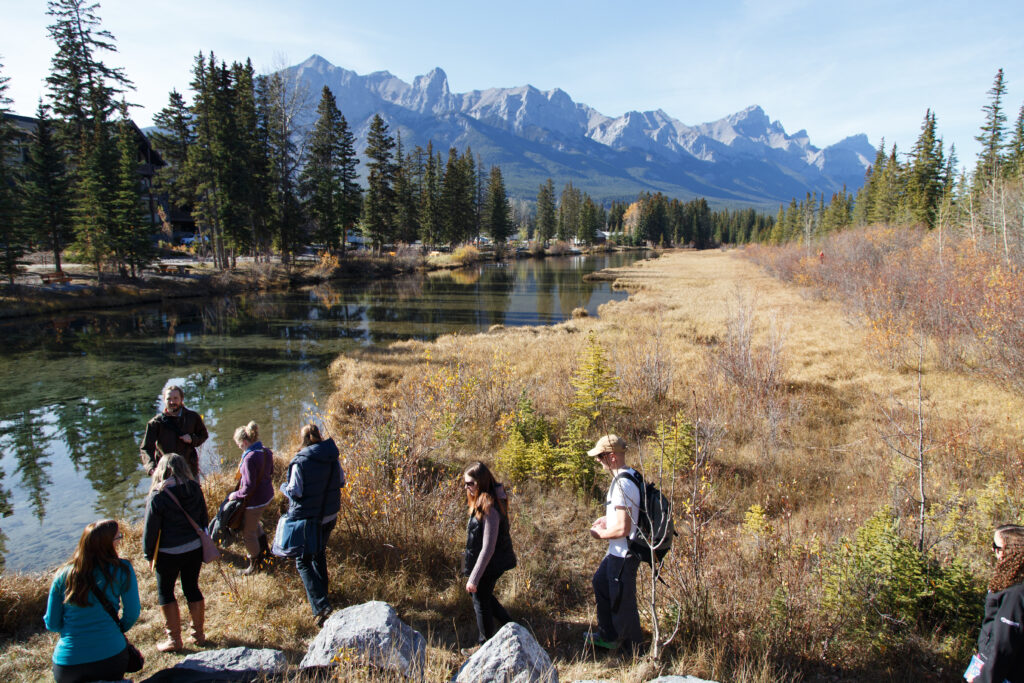
Close your eyes. Visualize a childhood memory. One that still beats fresh in your heart. Were you alone, or with others? What can you smell? What do you hear? And—most important—where are you?
For many people, memorable—even transformative—childhood experiences occurred outdoors. Building forts in the forest. Lake swims. Watching the Perseid meteor showers with your dad. Low tide walks at White Rock beach. Following mountain streams that meander from one pocket of wonder to another.
These are some of my memories. What about you?
Now imagine these same places, rooted in your mind and heart, being destroyed. The forest clear cut, the stream paved over, the shoreline industrialized beyond recognition. How does this make you feel?
Ecological grief profoundly impacts our mental health. Aldo Leopold wrote that “the penalties of an ecological education is to live alone in a world of wounds.” When we are aware of the world’s beauty, the gifts of the river and the tree, we grieve at their suffering and loss. This is something Indigenous peoples in Canada, subjected to residential schools and cultural genocide and land desecration, know all too well. The heart and the spirit ache when what we love is taken away from us without consent, and without reciprocity.
Increasingly, today’s generation are cultivating memories apart from the natural world. On YouTube, on TikTok, or (if outdoors) often fenced off, or paved, or helicopter parented, or otherwise de-wilded. Free, unsupervised play in wild areas, as well as children’s ‘right to roam’ in urban neighborhoods, has gone extinct in many areas. There are abundant reasons for nature disconnection: more road traffic, a decrease in wild (or even vacant lot) green space, fear of letting our children wander beyond our sight, and liability concerns over playgrounds and forts. A misconception also exists among urbanites that nature doesn’t exist close enough to home; in reality, nature is everywhere.
Sometimes we are forced indoors: recall the heat dome that hovered over British Columbia like a furnace no one could turn off, and the Pacific Northwest floods that nearly refilled Sumas Lake a century after colonial humans drained it. Both disasters occurred in 2021. More recent—and current—wildfires and floods have ravaged Nova Scotia. Nearly 60,000 acres burned in under a week from a single wildfire, while three months of rainfall drowned Halifax in a matter of hours.
These are the increasingly vocal calling cards of the climate emergency. Fear may drive us into taking action, though perhaps not fast enough. At the other end of the emotional spectrum comes love. We protect what we know and cherish. Major climatic catastrophes foster fear for an uncertain future. But equally—perhaps more—important is to foster love and care for the natural world.
In a recent conversation with musician Björk, Robin Wall Kimmerer advocated “to live in a place as if it matters.” To be in right relationship with the land. To live in balance with our community—our home—and take responsibility for our role in the ecosystem. As their conversation shows, you can be an artist or scientist (or from any discipline) and engage in climate action.
To cultivate a reciprocal relationship between our species and the more-than-human world requires intention and attunement. Education plays a critical role here. Patient presence and meaningful time spent outdoors is paramount. Place-based education, such as the work of KPU Wild Spaces, not only increases our sense of civic responsibility and generosity, but increases learner agency, boosts academic achievement, heightens focus, and facilitates a broad range of physical, mental, and emotional health benefits.

In his seminal The Land Ethic essay, Leopold wrote: “A thing is right when it tends to preserve the integrity, stability, and beauty of the biotic community.” Could this not become a barometer for success in education? Leopold further wrote that land is not inert but “a fountain of energy flowing through a circuit of soils, plants, and animals,” and how we can be ethical only to something we know and feel. Much inspiration can be offered here by Indigenous land-based education, which emphasizes the 6 R’s: respect, relationship, responsibility, relevance, reverence, and reciprocity.
If we want to address the climate emergency long-term, a foundational first step is for teachers and students to learn to live in a place as if it matters. When the river is a friend, and the cedar is a mentor, we are more likely to fight for their right to exist. An ecological education may come with penalties, but it also plants the seeds of empathy and action.
Note: this blog post is cross-listed with KPU Wild Spaces.